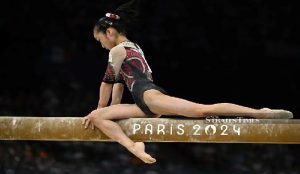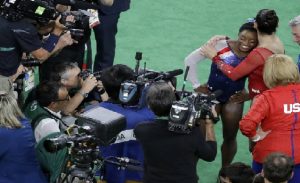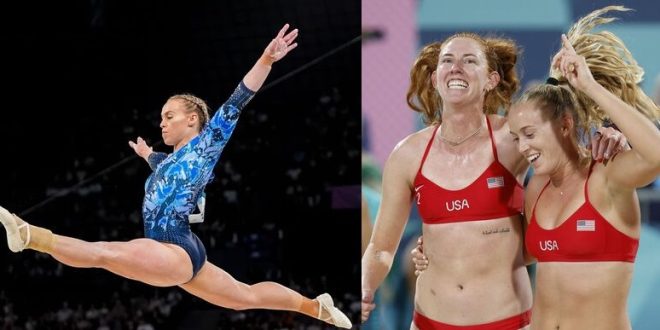30-07-2024
PARIS: The official Nike kits for American women competing in the Paris 2024 Olympics have been slammed as “a costume born of patriarchal forces” by one track athlete and “treating women as second-class citizens” by a commentator on Nike’s Instagram page because of the skimpy nature of the swimming costumes and leotards.
 Meanwhile, France has been criticized for its decision to bar its sportswomen from wearing the hijab.
Meanwhile, France has been criticized for its decision to bar its sportswomen from wearing the hijab.
Although the International Olympics Committee (IOC) has allowed international athletes to wear the hijab, French sportswomen will still be barred from exercising the right to wear the outfits of their choice during the Summer Olympics, which started on Friday and continue until August 11.
Whether it’s a question of sexist outfits or a ban on the headscarf worn by some Muslim women, directives can impinge on women’s freedoms and needs, activists say. Women should be allowed to wear outfits they feel comfortable in, they say.
Let’s take a look at the debate around women’s attire in athletics.
Why have Nike kits for this Olympics been criticized?
In April, the first look at Nike’s kits for men and women on the US track and field teams for the Paris Olympics were released by Citius Mag, a website that covers track and field.
The attire for men is a tank top and shorts that hit below the fingertips of the mannequin wearing them. For women, the kit is a leotard with a high-cut bikini line, drawing ire from female athletes.
“A costume born of patriarchal forces” is how US track and field athlete Lauren Freshmen described the kit in an Instagram post.
“If this outfit was truly beneficial to physical performance, men would wear it,” she said.
Jaleen Roberts, a US Paralympic athlete, wrote of the image of the new Nike kits: “This mannequin is standing still and everything’s showing … imagine MID FLIGHT.”
 Another commentator on Nike’s Instagram page wrote: “Shame, shame, shame Nike in treating women as second class citizens with their Olympic outfits.”
Another commentator on Nike’s Instagram page wrote: “Shame, shame, shame Nike in treating women as second class citizens with their Olympic outfits.”
However, other athletes pointed out that female athletes will have a range of designs to choose from and may opt to wear the men’s kits if they wish.
Olympic pole vaulter Katie Moon said: “I absolutely love people defending women, but we have at least 20 different combinations of a uniform to compete in with all the tops and bottoms available to us.”
Sports giant Nike defended the outfits saying, “The goal was to offer options that met athletes’ desires for choice, comfort and performance.”
It described the kits as “the most athlete-informed, data-driven and visually unified the company has ever produced”.
Why has France banned the hijab for its athletes?
In September, French Minister of Sports Amelie Oudea-Castera justified the hijab ban by saying the government was opposed to the display of religious symbols during the world’s biggest athletic event. The IOC ruled that athletes were free to wear the headscarf. However, French athletes are still subject to the rules of their sports federation and are not allowed to wear hijabs during the games.
Muslims make up nearly 10 percent of the population in France, and human rights experts say the hijab ban is part of a trend of policymakers “weaponising” France’s tradition of “laicite” (secularism) to exclude Muslim women and girls from French society. They note laws to ban the headscarf and the abaya, a loose-fitting, long-sleeved robe, in public schools in 2004 and in 2023, respectively. (Int’l News Desk)
 Pressmediaofindia
Pressmediaofindia




